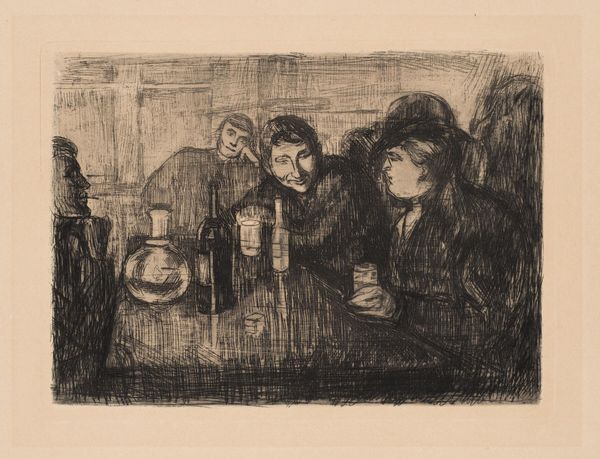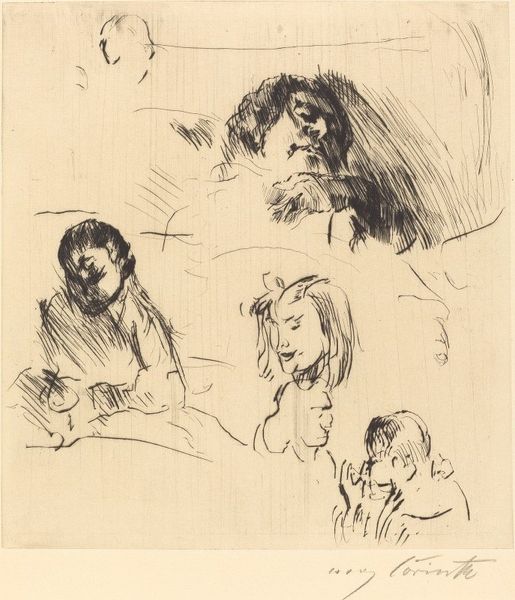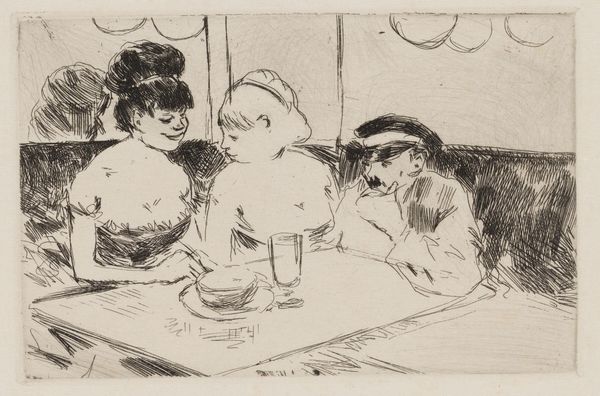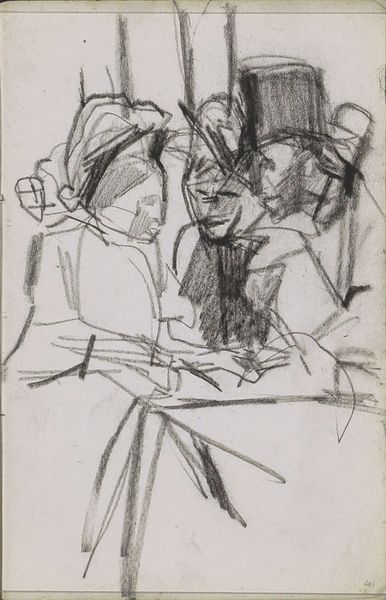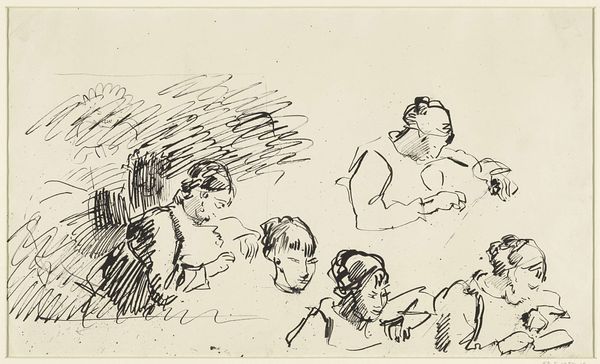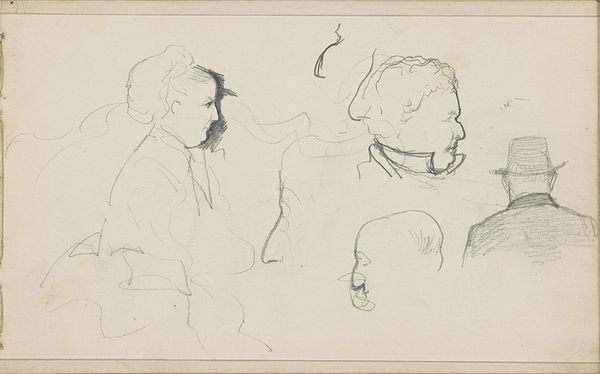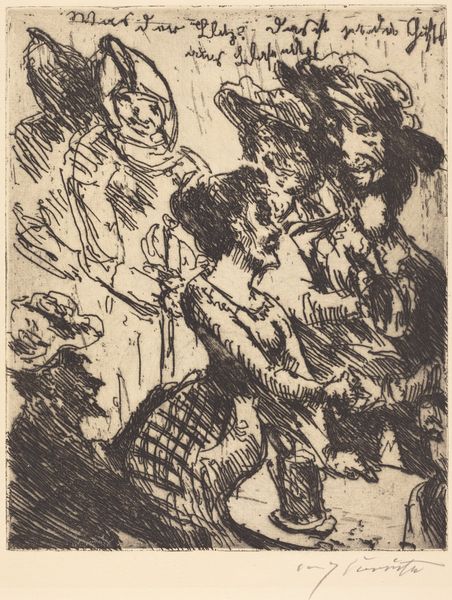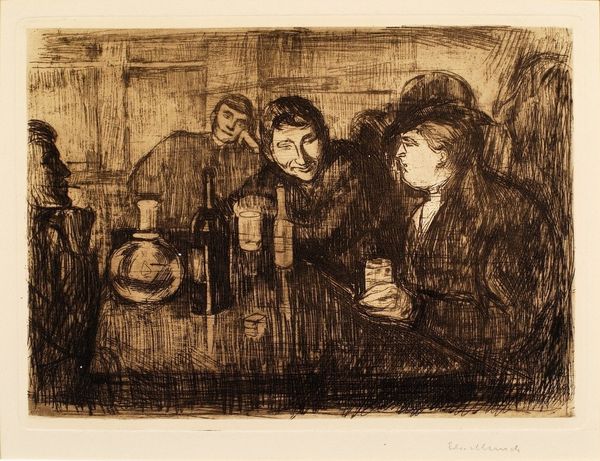
drawing, ink, pen
#
portrait
#
drawing
#
pen illustration
#
figuration
#
ink
#
expressionism
#
pen
#
genre-painting
Copyright: Public Domain: Artvee
Editor: This pen and ink drawing, "Chess Players" by Lovis Corinth from 1918, really strikes me with its frenetic energy. The lines are so scratchy and urgent. What do you see in this piece? Curator: I'm drawn to the very *act* of mark-making here. The furious hatching and cross-hatching isn’t just depicting figures, it’s materializing a feeling. Corinth's labour is evident, each stroke a deliberate action, fueled by… perhaps, the anxieties of the time? What does this process suggest about the artist’s relationship to his materials, and the scene he depicts? Editor: The energy definitely feels anxious. You can almost *hear* the scratching of the pen on the paper. It doesn’t feel like leisure, but more like an attempt to find some order or control. Curator: Precisely. Consider the social context: 1918, the end of World War I. Resources were scarce. This work on paper, this immediacy of ink, suggests a constraint, doesn't it? It eschews grand, opulent materials. There is a sort of "commonness" to both material and scene here. But what might the implications be of representing that scene, with these chosen, deliberately rough strokes? Is this 'chess' an elevated game or just… work? Editor: I never thought about it that way! It's like the cheapness of the materials highlights a different kind of tension, a sense of ordinary lives being lived during extraordinary times, away from heroic battlefields. Curator: Exactly. It raises questions about the very value we place on art, and on everyday scenes depicted in it. It moves us beyond idealizing grand themes of glory and competition, to focus on materials, labor, and the broader context of production. And that kind of refocusing gives even familiar images renewed meanings. Editor: Thinking about the pen strokes and the social context together gives the work a whole new layer of meaning. I now see it as both representation, and index of a fraught moment in history. Thank you! Curator: My pleasure! Now, to really delve deep, perhaps consider how consumption of art also reflects class tensions!
Comments
No comments
Be the first to comment and join the conversation on the ultimate creative platform.
